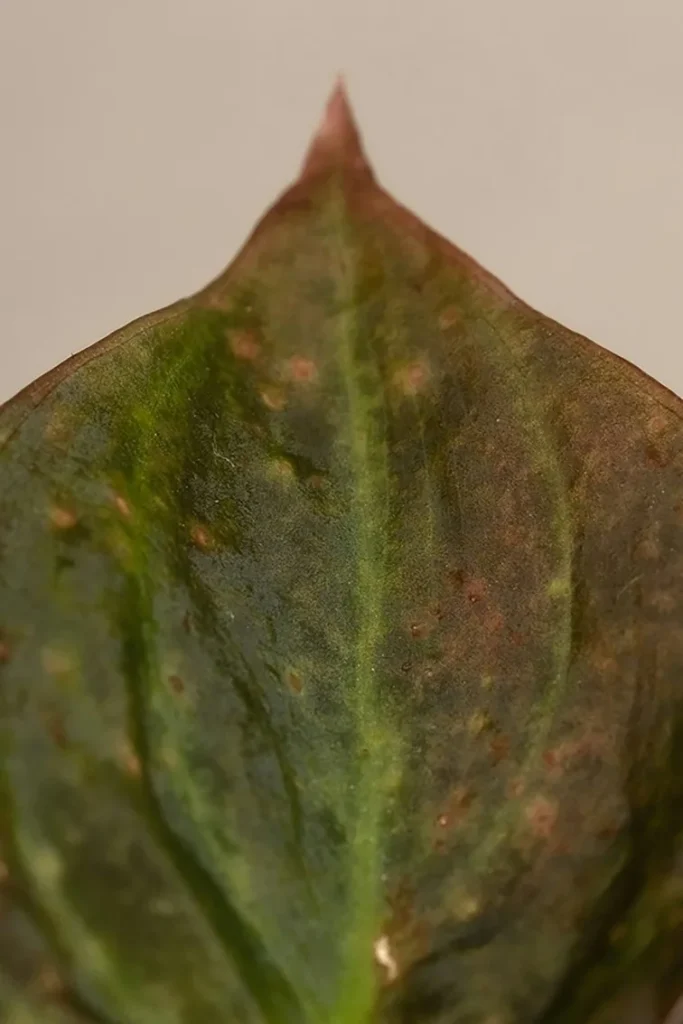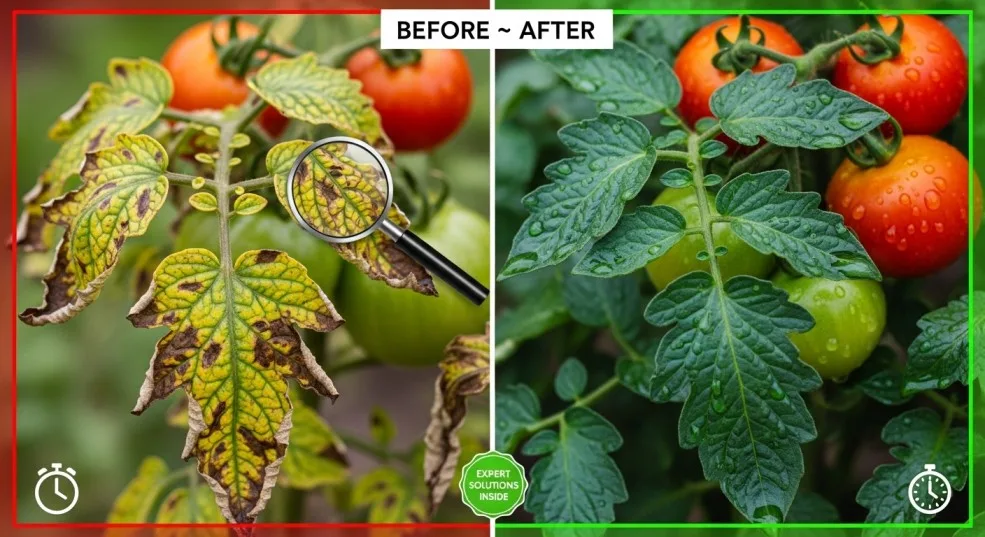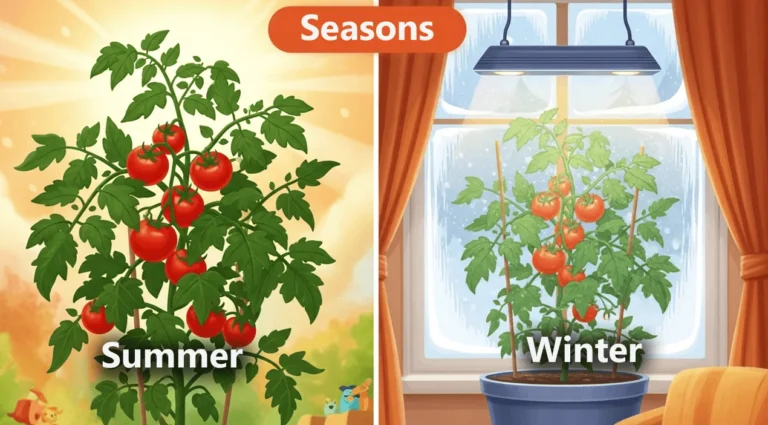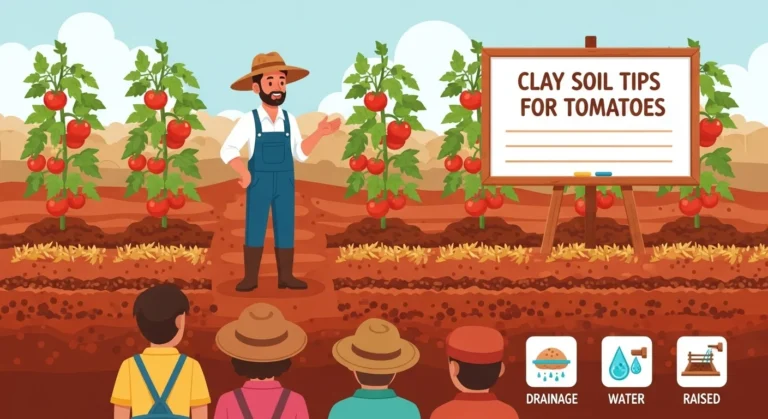Before diving into solutions, it’s essential to identify the specific issue your tomato plant is facing. Here are some common problems with tomato leaves and how to spot them.

Yellowing leaves are a common issue that can indicate several problems. They might be a sign of nutrient deficiency, overwatering, or even disease.
Generally, lower leaves yellow first when the plant lacks nitrogen. In contrast, yellowing from the edges inward could suggest magnesium deficiency.
Understanding the cause is crucial to applying the correct remedy. If the yellowing is due to nutrient deficiencies, a balanced fertilizer that includes nitrogen, magnesium, and other essential nutrients can help.
In cases of overwatering, adjusting your watering schedule to allow the soil to dry out between waterings can prevent further damage. Disease-related yellowing often requires more drastic action.
Identifying the disease early through leaf examination and then using appropriate fungicides or removing infected plants can prevent the problem from spreading.
Regular monitoring of your plants is essential to catch these issues early.
Leaf Curl

Leaf curl can be alarming, but not all curling is harmful. Physiological leaf curl happens due to environmental stress, such as heat or wind, and is generally not a severe concern.
However, if curling is accompanied by discoloration or stunted growth, it may be a sign of a virus or pest infestation.
Environmental stress-induced curling can be mitigated by providing shade during the hottest part of the day and ensuring the plants have enough water.
For pest-related curling, inspecting leaves for aphids, whiteflies, or other insects is crucial. Organic insecticidal soaps or neem oil can be used to control these pests.
Viruses, like the tomato curly top virus, need to be addressed by removing infected plants to prevent spread.
Planting resistant varieties and practicing good garden hygiene can also reduce the risk of viral infections. Regularly check your plants and act quickly if you notice unusual curling.
If you’re dealing with persistent leaf curl issues and want a comprehensive approach to solving this problem, check out our detailed guide on what is the best cure for leaf curl in tomatoes, which covers both environmental and disease-related causes with proven solutions from experienced growers.
Spots and Blotches
Spots on tomato leaves can be a sign of fungal diseases like early blight or septoria leaf spot. Early blight appears as concentric rings on older leaves, while septoria leaf spot shows up as small, water-soaked lesions that turn brown.
Fungal diseases thrive in warm, humid conditions, so improving air circulation by properly spacing plants can help.
It’s also beneficial to water plants early in the day so leaves dry quickly. Removing and destroying infected leaves can limit the spread of these diseases.
Fungicides can be effective if applied at the first sign of disease. However, they should be used judiciously to avoid resistance.
Preventative measures, such as crop rotation and using disease-resistant varieties, are key strategies in managing these problems.
Tomato Plant Diseases
Understanding the diseases that affect tomato leaves will help you protect your plants effectively.
Early Blight
Early blight is caused by the fungus Alternaria solani. It typically starts with dark spots on older leaves, which eventually yellow and drop off. The disease can spread rapidly in warm, wet conditions.
Prevention and Treatment:
- Rotate crops and avoid planting tomatoes in the same spot each year.
- Ensure good air circulation by spacing plants adequately.
- Use fungicides if necessary, and remove affected leaves to prevent spread.
Rotating crops is a powerful tool against early blight. By changing the planting location each year, you reduce the likelihood of disease organisms surviving in the soil.
Adequate spacing and pruning also help by improving airflow and reducing humidity around plants.
If early blight becomes a problem, fungicides can provide protection. Organic options like copper-based fungicides are available, but should be used according to instructions to avoid harming beneficial organisms.
Regular inspections and prompt leaf removal are crucial to keeping early blight under control.
Septoria Leaf Spot
Septoria leaf spot, caused by the fungus Septoria lycopersici, is another common tomato disease. It presents as small, circular spots with dark borders and gray centers.
Prevention and Treatment:
- Water at the base of plants to keep foliage dry.
- Remove and destroy infected leaves.
- Apply fungicides as a last resort.
Watering practices play a significant role in preventing septoria leaf spot. By keeping the foliage dry, you minimize the conditions that allow fungi to thrive.
Drip irrigation systems can be particularly effective in delivering water directly to the soil.
Removing infected leaves as soon as they appear helps limit the spread. This is especially important in wet weather when fungal spores can travel easily.
Fungicides should be considered only when other methods have failed, and applications should be carefully timed to maximize effectiveness.
For gardeners preferring organic approaches, there are several effective home remedies that can control fungal infections without synthetic chemicals.
Learn more about natural treatment options in our guide on home remedies for tomato plant fungus.
Tomato Mosaic Virus
The tomato mosaic virus causes mottled light and dark green patches on leaves, which may also become narrow and twisted. This virus can reduce yield significantly and is spread through infected seeds or by touch.
Prevention and Treatment:
- Use certified disease-free seeds.
- Sterilize tools and wash hands after handling infected plants.
- There is no cure, so remove and destroy infected plants.
Using certified disease-free seeds is the first step in preventing tomato mosaic virus.
Ensuring that seeds are from reliable sources reduces the risk of introducing the virus to your garden. Tool sterilization is another critical practice to prevent the spread of the virus.
Once a plant is infected, removal is the only option to prevent transmission to healthy plants.
Practicing good sanitation, such as cleaning tools and washing hands, can significantly reduce the risk of spreading the virus. Regular monitoring and quick action are vital in managing this disease.
Tomato Leaf Problems Pictures
Pictures can be incredibly helpful in diagnosing tomato leaf problems. A visual comparison with images of common issues can guide you toward the correct diagnosis and treatment.

Having a visual reference helps in distinguishing between different leaf problems. Photographs of healthy leaves compared to those showing signs of disease can be an invaluable tool. These comparisons allow gardeners to identify issues accurately and apply the right treatments.
Online resources and gardening books often contain detailed images of tomato leaf problems. By consulting these resources, gardeners can gain a better understanding of what to look for.
Sharing images with gardening communities online can also provide insights and suggestions from more experienced gardeners.
Preventive Measures
Prevention is always better than cure. Here are some strategies to keep tomato leaf problems at bay.
Proper Watering
Watering is crucial for healthy tomato plants. Ensure you water consistently and deeply, but avoid waterlogging. Aim to water at the base of the plant to keep leaves dry and reduce the risk of fungal diseases.
Consistency in watering helps maintain healthy root systems. Deep watering encourages roots to grow deeper into the soil, making the plant more drought-resistant. However, overwatering can lead to root rot and other issues, so it’s important to find a balance.
Using mulch can help retain moisture and reduce the frequency of watering. It’s essential to adjust watering practices based on weather conditions, as rainfall can supplement or replace watering needs. Observing your plants and the soil’s moisture level will guide you in managing watering effectively.
Nutrient Management
Balanced nutrition is vital. Use a well-balanced fertilizer to ensure your plants get the necessary nutrients. Be cautious not to over-fertilize, as this can lead to salt build-up and leaf burn.
Understanding the nutrient needs of tomato plants can prevent deficiencies and promote robust growth. Regular soil testing can provide insights into nutrient levels, allowing for precise fertilizer applications.
Organic fertilizers and compost can improve soil health and provide a steady nutrient supply.
Over-fertilization is a common mistake that can harm plants. Excessive nutrients can cause leaf burn and disrupt the plant’s natural growth processes.
Following recommended guidelines for fertilizer use can prevent these issues and support healthy plant development.
Mulching
Mulching helps retain soil moisture and regulate temperature. It also reduces the chance of soil-borne diseases splashing onto the leaves during watering or rain.
The benefits of mulching extend beyond moisture retention. By keeping soil temperatures stable, mulch helps promote consistent growth and protects roots from extreme weather. Organic mulches, like straw or wood chips, also break down over time, enriching the soil.
Mulch acts as a barrier against soil-borne pathogens, reducing the likelihood of disease transmission.
It also suppresses weed growth, reducing competition for nutrients and water. Applying a layer of mulch around tomato plants is a simple yet effective practice for maintaining plant health.
Crop Rotation
Rotate your crops each year to prevent soil-borne diseases from building up. Avoid planting tomatoes in the same spot or following crops in the same family, such as potatoes, peppers, or eggplants.
Crop rotation disrupts the life cycle of pests and diseases, reducing their impact on the next planting season. By rotating crops, you prevent the buildup of pathogens in the soil, promoting healthier plants.
Planning your garden layout with rotation in mind can significantly enhance your garden’s resilience. Alternating between different plant families also helps maintain soil fertility.
Different crops have varying nutrient requirements, and rotation ensures that soil nutrients are used efficiently. Keeping detailed records of plantings and rotations will help you manage this practice effectively.
Conclusion
Tomato leaf problems are a common challenge for gardeners, but with careful monitoring and prompt action, they can be managed effectively. By understanding the signs and causes of leaf issues, you can take steps to prevent them from ruining your tomato harvest.
Remember to keep an eye on your plants, provide the right care, and enjoy the fruits of your labor with a bountiful tomato harvest. Regular observation and proactive management are keys to success in tomato gardening.
By implementing preventive measures and responding quickly to problems, you can maintain healthy plants and maximize your yield.
Embrace the learning process, and over time, your efforts will result in a thriving garden with abundant, delicious tomatoes.




Leave a Comment